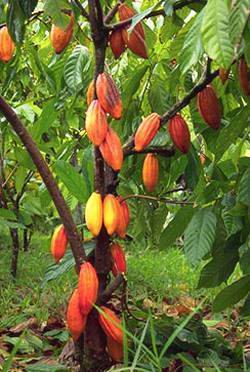
Chocolate is made from the seeds of the "cacao" plant. The origin of cacao dates back to the era of Mezoamerican civilization, and it was proved that by around BC 2000 it was already being cultivated in Central America and in the south of Mexico. The scientific name of cacao is "Theobroma cacao" which means food of God. In ancient times it was a food permitted only for the royalty and the nobility and some rich people because of its rich nutrition. Also, until the 15th century cacao was very valuable and used as a form of currency: ten cacao beans were worth a hare, a hundred beans a turkey.
The beverage made with ground cacao, corn flour, some spices and water was called "Chocolatl" and used as medicine or a tasty drink. It is said that origin of the word "chocolate" came from this "Chocolatl".

The first European who encountered cacao was Columbus, the discoverer of New Continent. After that, the Spanish conquerors of the Aztec Empire brought cacao to Spain. But, as this Chocolatl was very bitter and not tasty, they made a new sweet drink "chocolate" to suit their taste by adding sugar, vanilla, cinnamon and hot water. When a Spanish princess who liked chocolate very much married into a French Royal Family, a specialized cook accompanied her with the utensils to make chocolate. The chocolate became popular among the French upper classes, while, in England chocolate shops called "Chocolate Houses" opened and it became popular even among ordinary people.
Furthermore, in order to make chocolate smoother, by removing certain amount of cacao butter, a tasty, low fat and easy dissolvable in hot water drink "cocoa" was invented. On the other hand, solid chocolate was made by blending cacao paste, cacao butter, sugar and milk The origins of chocolate can be traced back to the ancient Maya and Aztec civilisation in Central America, who first enjoyed 'chocolatl'; a much-prized spicy drink made from roasted cocoa beans. Chocolate was exclusively for drinking until the early Victorian era, when a technique for making solid 'eating' chocolate was devised. Throughout its history, too